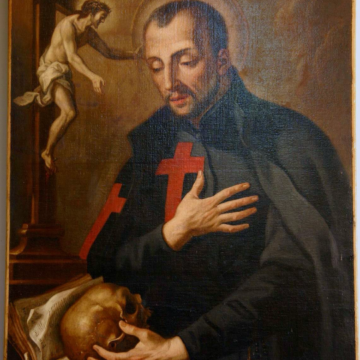 From Un uomo divenuto santo (‘A Man who Became a Saint’) by Giorgio Cosmacini
From Un uomo divenuto santo (‘A Man who Became a Saint’) by Giorgio Cosmacini
In looking at the model of Camillian care, like that of the ideal nurse, we cannot but see Camillus as a ‘precursor’ of the figures of nursing that would populate the scene many years after him, first in the move of hospitals from being ‘factories of health’ to being nineteenth-century ‘machines for healing’ and then in the move from such ‘machines’ to the hospital institutions of the twentieth century and on to the ‘health-care companies’ of nowadays.
In the middle of the nineteenth century, Florence Nightingale, the animator of religious or secular ‘sisters’ or ‘nuns’ who cared for cholera victims during the Crimean War (1854-1856), and then for every sick person who lay in the hospitals of Victorian England, commanded the admiration and the emulation of very many women who received training as nurses and then practised the nursing profession.
Let’s come to today. More than twenty years ago, during the course of the First National Congress of Nursing Care in Italy (Reggio Emilia 1993), many voices drew attention – with obvious diversities but also evident affinities – to the connections that exist between the ‘formula of absolute dedication together with military discipline’ of Camillus de Lellis and the ‘discipline and rigour’ that Florence Nightingale required to ‘train nurses able to improve the quality of care’.
In the realities of today’s world, the ‘prefiguring’ of Camillus, centuries ahead of its time, portrays in a lucid and exemplary way the physiognomy of a nurse and sees her or his presence in a hospital as a centre that protects patients, respecting their dignity and their rights.











Camillians on Facebook
Camillians on Twitter
Camillians on Instagram